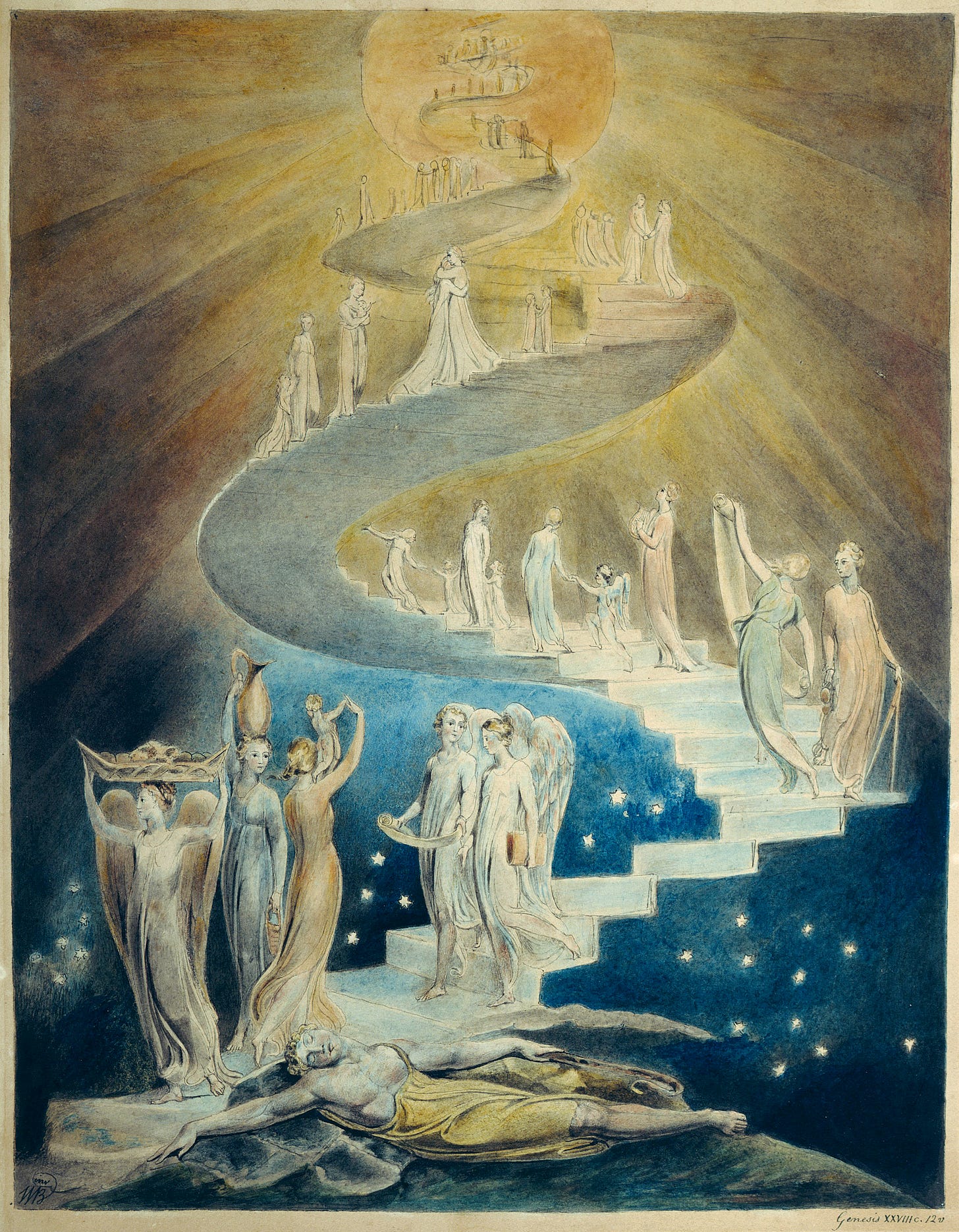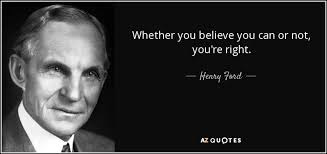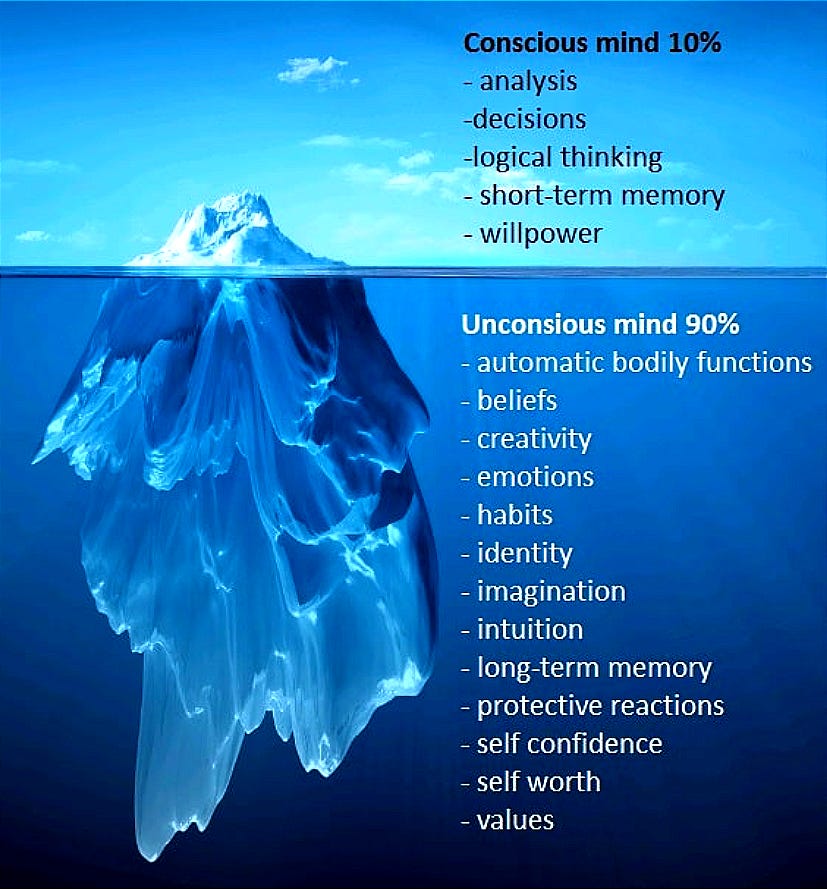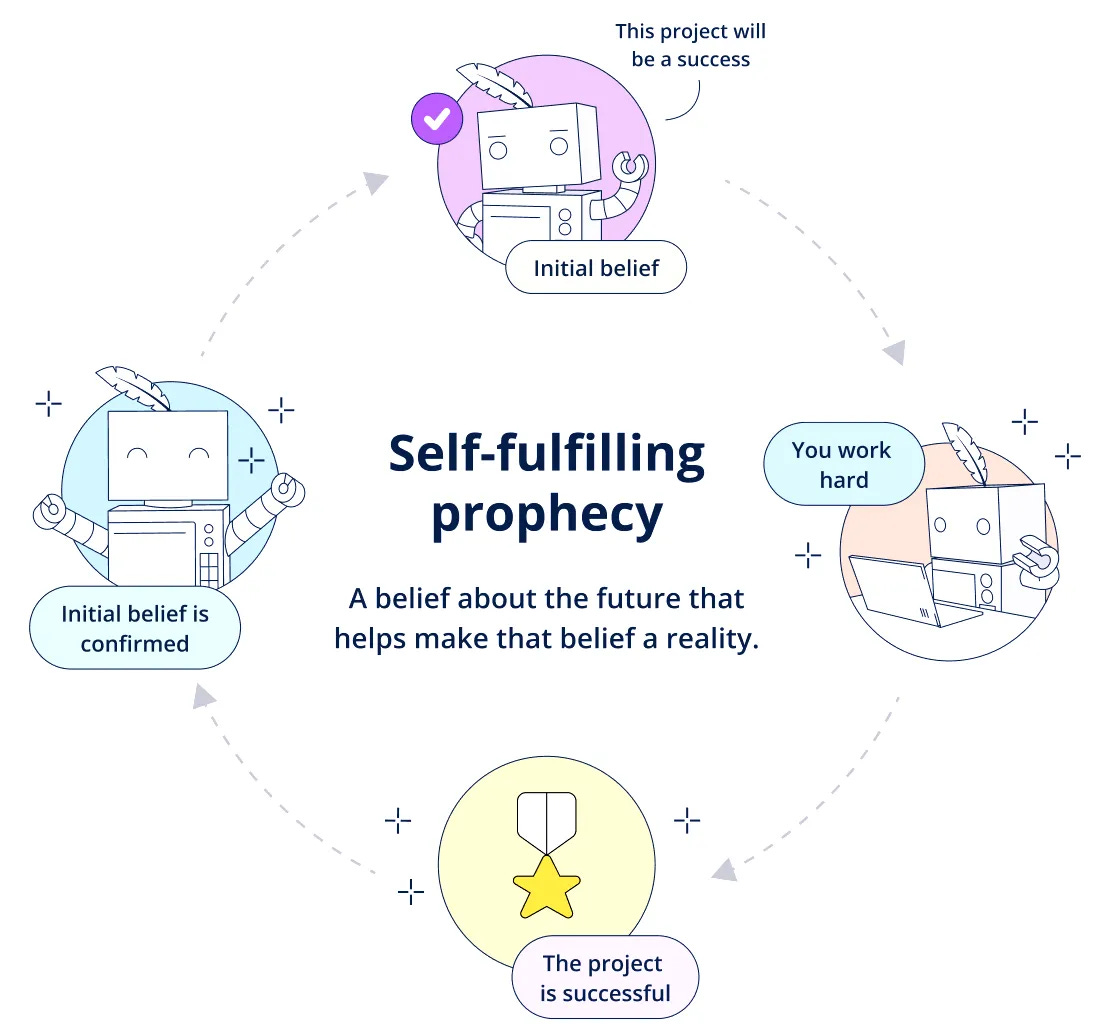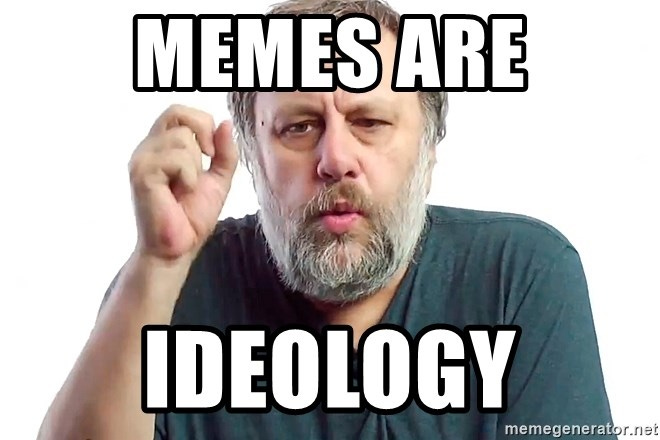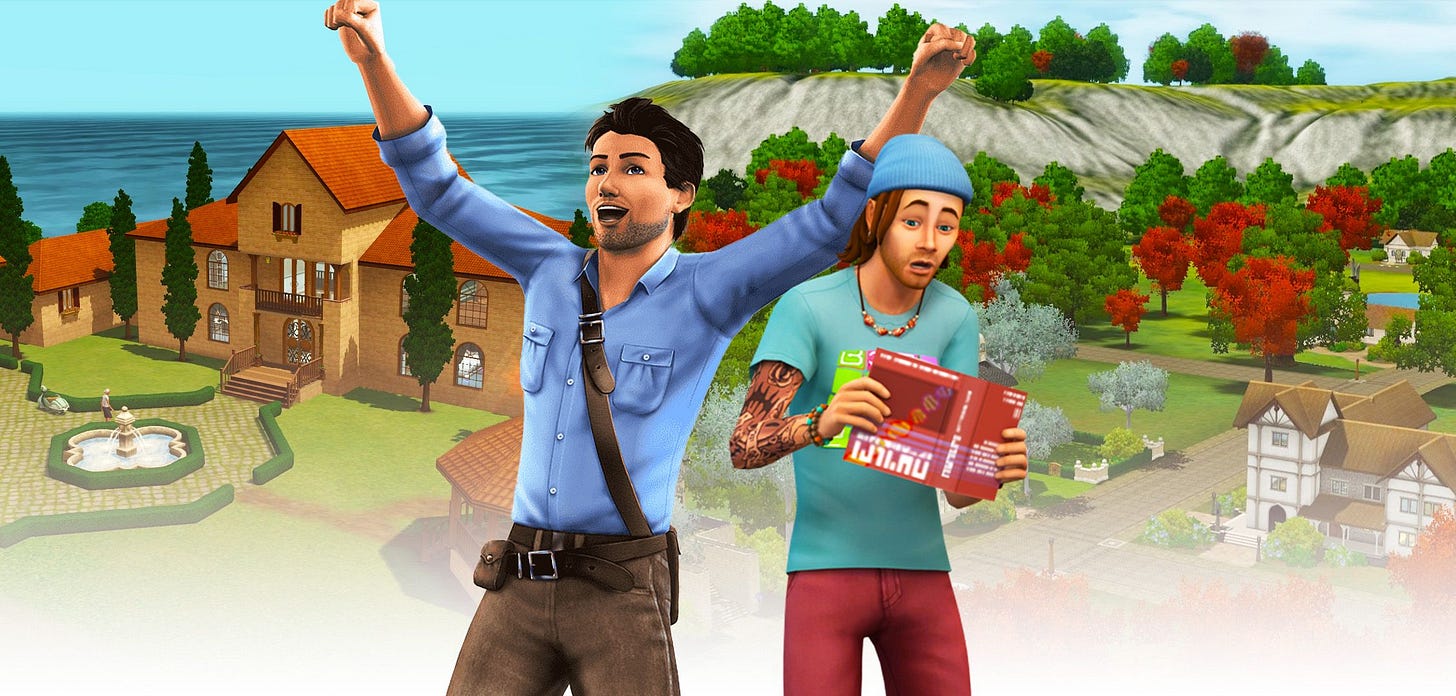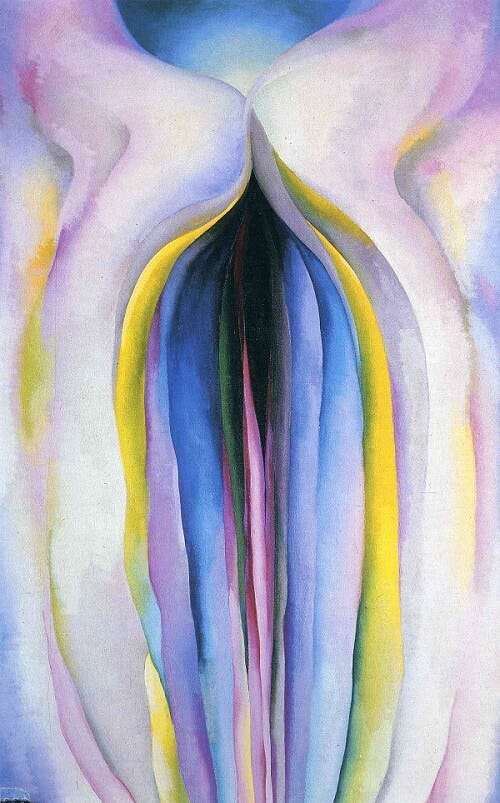This week I created an AI Podcast that covers the topics of the article be below.
Anakin Skywalker, a gifted Jedi with a sincere heart, is plagued by a disturbing vision: the death of his beloved wife, Padmé Amidala, shortly after childbirth. Though Padmé dismisses it as a mere nightmare, Anakin cannot escape the unsettling notion that his dream is a glimpse into a darker fate.
But why?
Deep within Anakin lies the raw wound of his mother’s brutal death—an event he was too powerless to prevent. This trauma carved into his psyche a desperate fear of loss and powerlessness.
As his nightmare of Padmé's death consumes him night after night, Anakin makes a silent vow: he will not fail to save someone he loves again, no matter the cost. His desperation leads him down a perilous path toward gaining power, no matter the cost.
At first, each compromise seems small—a necessary evil to protect the one he loves. But as Anakin succumbs to the Dark Side of the Force, these compromises grow more severe. Piece by piece, he discards the values that once defined him, forsaking the Jedi ideals of service and empathy for deceit and aggression.
Convinced that the ends justify the means, he begins his steady surrender to the Dark Side of the Force.
Anakin imagines a new galactic order—one he will rule with Padmé at his side. He leads an onslaught on the Jedi Temple, even slaughtering innocent younglings, and each horrifying act erodes the line between his noble intentions and the evil he has come to embody.
For one cannot destroy evil by becoming a devil.
In his quest for power, Anakin loses the very values that made him who he was.
Padmé watches the man she loves disappear behind this ruthless pursuit of control. She cannot bear the thought of their children growing up in a galaxy driven by fear and control—nor can she reconcile the loving husband she married with the relentless tyrant he has become.
In her final moments, she whispers, “There is still good in him,” a truth that would haunt Anakin.
Anakin’s worst fears manifest not because they were inevitable but because his actions, driven by fear, made them a reality. By attempting to control fate through darkness, he becomes the very evil he sought to prevent—and in the process, his transformation into Darth Vader destroys the one person he was most desperate to save. It is a stark reminder of how beliefs and unconscious fears can shape our destinies, often with devastating consequences.
The Power of Beliefs Unveiled
Anakin’s tragic descent into tyranny profoundly illustrates how our deepest beliefs and subconscious fears can sculpt our reality, identity, and destiny.
His unwavering conviction in the nightmare’s prophecy sets in motion a self-fulfilling prophecy, where his choices, fueled by fear and a desperate desire for control, manifest the very outcome he dreads.
Padmé’s loss of will to live is a direct consequence of his transformation, highlighting how one’s internal struggles can profoundly affect others.
Like Anakin, most of us are navigating our lives guided by unseen beliefs and fears, unaware of how they shape our reality and impact those around us.
In the journey ahead, we’ll delve deep into the nature of beliefs—how they operate like sophisticated software applications, altering our thoughts, feelings, and behaviors.
Together, we’ll explore how to truly take the ‘red pill,’ awakening to a reality that exists beyond our beliefs, and step into the fullness of who we are.
Here is what is what is ahead:
Chapter 1: The Nature of Beliefs
Chapter 2: How Beliefs Shape Your Reality
Chapter 3: The Simulation of Reality
Chapter 4: Awakening from the Simulation
Chapter 5: Experiencing Reality Beyond Beliefs
Chapter 1: The Nature of Beliefs
Beliefs are not just passive ideas residing in our minds; they are active forces that shape every aspect of our reality. They act as lenses through which we perceive the world; they determine how we interpret our life’s situations, and then they influence our thoughts, emotions, and actions.
Understanding how beliefs construct our reality is essential to recognizing the power they hold over our lives and how we can harness or transform them to create the experiences we desire.
This is, in fact, in the very definition of ‘beliefs’.
What are beliefs?
Here is Webster’s definition:
An acceptance that a statement is true or that something exists.
Trust, faith, or confidence in someone or something.
A religious conviction.
So, beliefs are far more than trivial! They define what we accept as true and something's existence.
In other words, beliefs define our reality. When we believe something to be true, then that something exists for us as if it were true. We then act on it and behave in accordance with our beliefs.
So beliefs define:
What is true about our world
What we believe is true about ourselves
What we believe is true about our place in the world and our ability to affect change
Inform how we interpret our overall relationship with the world
As the famous saying goes,
“Whether you believe you can or that you can’t,
you’re right”.
Formation of Beliefs
Just consider how different you might be if you were born in a different part of the world or time period. Your language, culture, and how you see the world would be vastly different.
Our environment gives us a language, culture, and mental framework for understanding our experiences.
It makes numerous beliefs available to us, and these beliefs can be used as a way to navigate our world. Then, we form our beliefs based on our psychology, temperament, mental processes, and personal experiences.
Forming beliefs is an ongoing process between our experiences and interpretations. The process shapes and changes us throughout our lifetime and is reflected in our overall attitude and relationship with life.
The Mind’s Operating Systems
Beliefs are your Mind’s Operating System. They are like a master software program that handles all the information in and out of your system.
Your Operating System determines what programs you can run, what information your computer can process, and what your computer can do.
Similarly, our Mind’s Operating System determines how we process, interpret, and act on information.
Our Mind’s OS does this through stories; stories organize information, make sense of it, and give it meaning.
And here we run into a dilemma. If everything is meaningful, nothing stands out, so to make a story meaningful, it must stand out and be believable.
So, out of the millions of moments of experiences we have, our Mind filters through these experiences for patterns of meaning and creates stories that we can use to orient ourselves.
The stories we believe tell us who we are, what is true about the world, and how we ought to behave in a given context.
Most of our beliefs are subconscious, as we are not fully clear on our beliefs, and we are not fully aware of them and how they impact our lives.
Subconscious Beliefs & Power of Hidden Assumptions
Subconscious beliefs are assumptions about the world that are deeply ingrained in our minds, often formed early in life, and are so readily accepted as truth that we rarely question them.
In fact, questioning them would seem ludicrous, and doing so could often bring about ridicule.
As such, they act as hidden, invisible mental programs that underpin many of our beliefs.
They show up in our language and how we interpret our experiences.
Let’s look at a few examples:
"The Sun rises in the East and sets in the West."
Due to language and phrasing, we believe this statement; however, upon further inspection, it’s obvious that the Sun does not rise or set. Instead, the Earth orbits the Sun. This phrase comes from a bygone era when people believed that the Earth was flat and the center of the universe because it appeared so.
‘Tall and Short,’ ‘Light vs. Heavy,’ etc
We believe that ‘tall and short’ exist, but not really. These are attributes we give to objects based on a comparison with other objects.
In other words, since ‘tall’ and ‘short’ define each other, they do not have an independent existence apart from each other. There is no such thing as ‘tall’ without another thing called ‘short.’
Interestingly, these attributes have no impact on the object they describe but only impact the subjects that experience them. For example, labeling someone as “tall” or “short” can influence social dynamics or self-image.
“You Throw Like a Girl”
The phrase “you throw like a girl” is often used to insult someone’s athletic ability, suggesting that they are weak or unskilled, and it reinforces gender stereotypes.
This is an example of how, through language, we impose judgments on other people and even objects.
Despite these descriptions not physically changing the person being targeted, they can significantly impact the relationship dynamics, affecting how individuals are perceived and treated. Here, language and judgment become the primary experience, often overshadowing the reality of the individual’s abilities.
“I am good at ‘chess’ and bad at ‘checkers’.” “I am ‘X, Y, Z’”
We often reduce a complex array of experiences, like playing chess, into a single proclamation that defines us to ourselves and others. In this way, we generalize our experiences, filtering them based on value judgments and then proclaiming them like a static fact.
Whenever we use “I am” statements, we reduce ourselves and our identity to a narrative. Who we are becomes a 'story', we repeate to oursleves and others.
To take this further, we create stories and narratives about every area of our lives, relationships, and our identity.
“The world is your oyster,” “The world is flat.”
“The world is your oyster” is an idiom that means you can go anywhere or do anything you want in life. We tell stories about the world, what it is made of, and what that means to us. We reduce the world to these stories and then believe that the world is, in fact, a set of stories.
Chapter 2: How Beliefs Shape Your Reality
Like everyone, you have sold yourself a set of stories of how things are and how you are. The narratives you believe are unquestionably true then shape your experience of the present moment. These stories are like lenses through which you interpret and give the world meaning.
The Lens of Beliefs: Shaping Perceptions
Our ingrained beliefs don’t just influence how we see the world—they actively shape the world we experience.
Here is how it works:
Reality is Subjective
Experience is all that we ever really know.
We decide what facts and people to pay attention to and give authority to what we believe is true. As such, authority does not come from the outside (God, Government, science, etc.); instead, it is given and attributed by the individual in accordance with what he believes is true. In this way, our reality is personal and is constructed through the lens of our personal beliefs.
Consider how two people can experience the same event but interpret it differently based on their belief systems. This subjectivity means that our beliefs have the power to create a personalized version of reality unique to us.
We see this in the story of Anakin and his wife, who both know the dream's details. However, Anakin believed it was a prophecy, while Padmé saw it only as a dream.
Anakin’s belief in the dreamed prophecy then filtered how he interpreted his life situations and relationships through a prism of fear. He then perceived new threats everywhere, making his prophetic dream seem all the more real. Perceiving threats everywhere built up a lot of emotion and motivated him to act.
Beliefs & Actions
Beliefs not only affect perception but also our behavior. Our actions are often guided by what we believe to be true, leading us to make choices that align with our beliefs. This behavior then creates outcomes that reinforce the original belief, forming a self-fulfilling prophecy.
Today, if you believe that Bitcoin or Tesla will go up in price substantially and that you can become rich by taking on a little risk, you are likely to feel a surge of desire and dreams of achieving your goals, and along with them comes the fear of missing out. This combination of extreme desire and FOMO illustrates the power beliefs have on our actions.
Strong beliefs provide a big surge of motivation to act on the belief. They keep you focused and produce strong feelings of both fear and desire. Then, through our actions, we reinforce the original belief, forming feedback loops and eventually a self-fulfilling prophecy.
The Feedback Loops
Our beliefs trigger our actions, which transform our environment, which then reconfirms our beliefs and leads to more actions and more transformation.
As Anakin began to perceive threats everywhere, this built up a lot of emotion in him and motivated him to act. By acting out according to those beliefs and by treating people as threats, he turned his friends into enemies and started to bring into existence the very threats he perceived. The more he fought his demons, the bigger they became.
This is a Feedback loop.
Regardless of whether a belief is true or accurate, it can create a feedback loop that produces the experiences that confirm the original belief.
Confirmation Bias
Confirmation bias is the tendency to search for, interpret, and recall information that confirms our pre-existing beliefs while disregarding evidence that contradicts them. This cognitive bias strengthens our beliefs over time, making them more resistant to change.
For example, Anakin ignored his wife’s interpretation of the dream. He also ignored wise counsel that aimed to help him see through his false beliefs. Throughout the story, Anakin has many opportunities to look at the bigger picture and challenge his own beliefs, but instead, he focuses on information that confirms his assumptions.
Emotional Reinforcement
Positive emotions signal to the brain that one is on the right track. They confirm and strengthen our beliefs and motivate us to double down on our actions.
Negative emotions, on the other hand, make us uncertain about the future and our direction. Fear and anxiety make us freeze, and in desperation, we cling to what we know and believe.
During a Bull Run or Market Mania, investors and speculators regularly check prices and actively seek information that confirms their beliefs. As prices increase, this reconfirms their beliefs and rewards them with dopamine. Many begin to double down and buy more and more of the investment.
Negative information and lower prices are ignored, rationalized, and suppressed during this time. This often leads to massive gains on the way up, doubling down, and euphoria.
There is a total disregard for negative news and down days, and then, one day, the market starts falling. As the market is falling, most cling to the investment, believing it will go back up. They hold on until the market fully crashes.
In a paradoxical fashion, the core beliefs are actualized.
What are the core beliefs?
The core belief is that prices will increase, allowing us to become rich. In other words, we don’t believe we are rich right now. Here, both beliefs are actualized in our reality, the opportunity to become rich and the belief that we are not rich.
Now, this is a type of self-fulfilling prophecy.
Self-Fulfilling Prophecies
A self-fulfilling prophecy is a psychological phenomenon that occurs when a person's expectations or beliefs influence their actions, which in turn causes the prediction to come true.
We all have experienced this before. For example, when we go on a Date with someone we really like and are afraid of rejection, our insecurity can bleed through our voice and behavior, making us awkward and unattractive, which triggers the rejection we feared.
In Star Wars, as Anakin started to see threats everywhere, through his perceptions, he began turning his friends into enemies. He did this over and over again, and in this way, the belief was starting to transform both him and his life situation, eventually matching the belief itself. Finally, this way of perceiving and behaving in the world produced the reality he was trying to avoid.
And this raises the question, how strong and powerful are beliefs really?
Can beliefs change or impact objective reality? Can beliefs turn sugar into medicine?
Beliefs & Reality
We often think there is a difference between ‘Facts’ and ‘Beliefs.’ However, our ‘facts’ are frequently just beliefs we believe are true. Then, the belief itself gives them reality.
But to what extent?
And what about situations where the ‘Facts’ are clear, objective, and scientifically valid? Do beliefs have an influence on scientific facts?
And if so, how much?
The answer is Yes, and it is significant.
This power of beliefs to shape experience is so powerful that even drug testing requires using a placebo in double-blind tests.
Here is how the experiments work:
The Experiment is split into two groups:
Experimental Group: received an actual drug that is being tested
Control Group: received a placebo, which is essentially a sugar pill
Double Blind:
Groups: Neighter group knows if they are getting a placebo or the actual drug
Scientists: The scientists running the experiment and administering the drug/placebo don't know which group is which.
The placebo effect can be powerful, and its strength can vary depending on the condition being treated:
Antidepressants
The placebo response can account for up to 62% of the measured drug response.
Pain-related therapies
The placebo response can account for up to 68% of the measured drug response.
Migraines
In one study, a placebo was 50% as effective as the real drug in reducing migraine pain.
In many cases, the Placebo effect accounts for the majority of the drug effects. In other words, the effects are so strong that the drug doesn’t provide that much more relief than the placebo.
Conversely, when negative expectations shape our experiences, we encounter the “nocebo effect.” This occurs when individuals experience harmful effects from an inactive substance. For example, in a COVID-19 vaccine trial, 35% of placebo recipients—who received no vaccine—reported adverse reactions after the first dose. These reactions weren’t caused by any medicinal ingredient; rather, they arose from the participants’ expectations and fears.
This demonstrates how “viral memes”—cultural stories, rumors, and widespread narratives—can profoundly affect our experiences and well-being.
Beliefs as Viral Memes
Beliefs are not confined to the individual Mind; they are dynamic entities that can spread from person to person, like viruses.
This phenomenon can be understood through the concept of “memes,” a term coined by evolutionary biologist Richard Dawkins to describe units of cultural transmission or imitation.
Memes are ideas, behaviors, or styles that propagate within a culture, and beliefs are among the most influential of these.
The Transmission of Beliefs: From Individual to Society
When an individual adopts a belief, they often share it through communication, behavior, or expression. If the belief resonates, it spreads to others, creating a ripple effect that can permeate an entire society.
As more people adopt the belief, it gains momentum and can become part of the collective consciousness.
When a belief is shared by a significant portion of a society, it shapes cultural norms, values, and even laws. At this point, the belief transcends individual cognition and becomes embedded in the societal framework.
The Dance of Macro and Micro Influences
Society (Macro) and the individual (Micro) are in a dance where they continuously influence and inform each other.
Macro → Micro: Societal beliefs provide a framework within which individuals interpret their experiences. Examples: Cultural narratives, education systems, and media shape personal beliefs and values.
Micro → Macro: Individual beliefs can alter societal norms, especially when shared by influential people or groups. Examples: Grassroots movements, artistic expressions, and technological innovations often begin with individual ideas that gain collective traction.
From Society to the Individual
The vast majority of our beliefs are not originally ours. They are absorbed from our cultural milieu—family, community, media, and institutions—and become part of the “operating system” through which we interpret and navigate reality.
Even fantastical or unfounded beliefs can serve essential psychological functions. They provide emotional comfort, intellectual stimulation, and identity formation or offer coping mechanisms against uncertainty. Because they help us make sense of the world, we often cling to them tenaciously.
Yet, most of these beliefs remain unconscious. They operate silently in the background, forming the bedrock of our assumptions about ourselves and about life itself.
In the story of Anakin Skywalker, these unconscious beliefs include viewing the galaxy as hostile and dualistic, seeing himself as uniquely special, and feeling compelled to bring stability and security through power and control. Without wielding such power, he fears invalidation and humiliation, reducing him to a hollow shell. Ultimately, these beliefs led him to become Darth Vader.
The Ultimate Takeaway
Most of what we know and believe is curated information and memes that society has provided us. We often take the consensus to be true, and it shapes our world. In this way, beliefs can define reality for both individuals and societies.
Ultimately, we don’t own most of our beliefs or ideas. In cases like Anakin’s, a single, powerful belief can take hold and dominate a life. He did not possess his beliefs; his beliefs possessed him, guiding his actions and sealing his fate.
This is the real takeaway: sometimes we own our beliefs, but much of the time, they own us.
Chapter 3: The Simulation of Reality
One core belief that shapes our perspective is that we see our reality and ourselves from the outside in. We believe our fundamental reality is that we are a separate person living on a planet in the vast Milky Way galaxy. This perspective prioritizes the world and our physical reality, rendering us inconsequential. This is the primary objective reality that informs our relationship with the world.
However, this is not our actual experience.
In actuality, our reality is fundamentally subjective. We focus our attention on our thoughts and feelings. We think about what we must do today, our friends and family members, our future, our worries, and so on. We spend our entire day thinking and feeling, so our primary reality is a subjective experience, and oftentimes, we will even forget about our body, our posture, and the world beyond what we are paying attention to. Therefore, our primary reality is the experience of being "me" in the ‘world.’
As we inquire, it becomes self-evident that our conscious experience is our primary reality; it is the only thing we can know for sure and without any doubt. Then, the other people and objects in our experience are not dead and meaningless but rather full of meaning. We attribute this meaning to the world through our beliefs, which then manifest in our thoughts, feelings, and actions. So, on a fundamental level, what we experience is not the world as it is or people as they are but our relationships and the meaning we attribute to them.
In other words, you are not a person living in the world; instead, you are a conscious being experiencing what it is like to be You living in your world. And your world is your simulation. It is a byproduct of your stories, beliefs, the meaning you give it, and your relationship with that meaning.
Video Game Analogy
Do you remember the Sims?
The Sims is a life simulation video game where players create and control virtual people, called "Sims," and manage their daily lives. Players can customize their Sims' appearance, personality, skills, relationships, and environment. They can also build homes, have careers, form relationships, and try on gender identities. The game is open-ended, with no primary objectives to achieve or storyline to complete. Players can choose their own goals and objectives.
The game draws astounding parallels to our lives. The game itself, as in the graphics, the UX, and so on, are secondary. In fact, it does not exist independently of the players. The players bring the game into existence, and what is primary in the game is the internal psychology of the character (the player) and their social environment (other players).
As a Sim, you can choose to have any type of experience. You have total freedom, and there is no moral judgment. You can be a CEO or the head of the Italian Mafia. You must then take on certain characteristics and beliefs to play the role successfully. The character you play then must perceive, think, feel, and act out the role. You bring it to life from the inside out, and as you become the character, your life transforms to match. Character is destiny, and you get to experience what it is like to be ‘that.’
Now, in the Sims and in life, you can choose again. You can decide if you want to become a different character, and you can go from one type of experience of life to another. However, no matter who you become, you will still be a ’somebody’ and, in this sense, live a simulation within the confines of belief.
Beliefs as Tools
Beliefs are then like a valuable set of tools designed to help us create the life and world we want to live in. When a story of what life is about and who we are no longer fulfills our needs, we look for another story, and this can lead us to more, better, and different. We look for more money, more success, better experiences, different relationships, etc. Eventually, this is not enough, and it can lead us to explore religion or spirituality.
Religion is a complex set of meta-narratives about the nature of reality designed to accomplish a certain goal, such as salvation or liberation. When you explore a spiritual tradition, you engage with its narratives, techniques, and overall effectiveness in transforming your life.
Embracing a more uplifting interpretation of reality is an effective way to improve one’s life and can warrant changing one’s beliefs.
In many spiritual traditions, like Tantra, this is a necessary step on the way to complete the transcendence of all narratives.
Going from one belief to another is akin to trading one dream for another. However, taking responsibility for our dreams and beliefs can help us wake up from them when done intentionally.
So, in Tantra, the goal is paradoxically to be able to dream the perfect dream and to also be able to wake up because no dream and no story can contain the whole truth.
So, how can you wake up from the dream?
Chapter 4: Awakening from the Simulation
Waking up from the dream isn’t simply a matter of exchanging one set of beliefs for another. Instead, there is a natural progression—akin to a Hegelian process—where even our own nightmares become the catalyst that ultimately awakens us.
How?
Beliefs are both true and false: they reflect aspects of reality yet never capture the whole of it. As powerful filters, beliefs shape our perceptions and can even manifest self-fulfilling prophecies, molding the world to match our expectations. However, their incomplete nature means they will never fully fulfill our needs.
More, better, and different won’t be enough at some point. We come face-to-face with the emptiness of our unfulfilled dreams and our own suffering.
Obviously, if we had it all figured out, we would not be suffering. We may look for a new way of life and narrative that promises fulfillment.
This is our Wake-Up call.
Our suffering begins to propel us to explore new ways of being in the world. We might jump from one belief to another, seeking fulfillment and ending our suffering.
This process of exploring and playing with beliefs helps us become aware of our existing beliefs.
Growing and maturing means uncovering limiting beliefs and negative emotions, tracing them back to their origins, and casting a compassionate light on our pain. As we peel away these layers, we start to recognize how certain thoughts, feelings, and beliefs create or exacerbate our suffering.
Once we see the direct relationship between our stories and our suffering, the entire structure unravels because we stop believing in ‘our stories.’ It’s like realizing that the Emperor has no clothes.
Of course, letting go of entrenched stories can be confusing and disorienting, particularly when those stories shape our identity. We might wonder, “Who am I without them?”.
The deeper you go, the more aspects parts of who you are come into question until your identity itself comes into question.
At this stage, you might ask, “‘Who am I?” “What am I?”. Who am I beyond my thoughts, feelings, and beliefs about myself? Who am I beyond my roles, identities, and history?
You begin to see that a story cannot define who you are. That you can not be reduced to a thought or set of thoughts.
You realize that you are not even the thinker of your thoughts because when your thoughts go, you don’t go with them. You can then notice the silence between thoughts. Your feelings and beliefs also come, go, and change over time, yet you are still here.
You discover that you are none of the content of your Mind. Instead, you are the awareness that is conscious of your thoughts, feelings, stories, narratives, beliefs, and experiences.
By sitting with these questions and investigating deeply, you can experience the reality of who you are beyond thought, and in this way, by abiding in your own awareness, you can begin to transcend the Matrix of beliefs.
This is the beginning of the 'real.'
As you disassociate with the Mind, you gain clarity into the remarkable power of thoughts believed.
Through this process, we consciously guide our growth and gradually fully awaken from the dream we once constructed.
We realize that every type of story, worldview, and belief is available to us and that we need to choose wisely which ones we want to pay attention to and bring into our world.
This begins a fundamental shift in our identity and relationship with the world and with suffering itself. We no longer see suffering as an unnecessary evil in the world. Instead, we see suffering as a form of grace because it is the one thing we cannot lie to ourselves about.
We begin to interpret negative, limiting beliefs that make one feel sad, afraid, distrustful, unworthy, powerless, or otherwise stuck in negativity as attempts to protect the self stemming from a place of self-care and confusing beliefs for reality. Even hate can be tied to caring deeply—perhaps we once sought love from someone who ultimately betrayed our expectations.
This helps open our heart and respond with deeper compassion.
We know that the truth goes beyond language, narratives, and stories. No belief system can not contain the ‘real,’ the ‘truth.’
We then start to wake up from the dream of language, the Matrix of beliefs altogether.
At this stage, we are transcending the Matrix, yet we can use the Matrix to construct our lived experience.
Life becomes about constructing the ideal self-expression. To live in the world in such a way that affirms life itself and expresses our universal care.
Our way of life then becomes our greatest artistic expression. You begin to live life in such a sweet way that you would gladly relive your life a thousand times.
Our journey takes us from a personal “HELL” of suffering, limitations, and living in a cold dead dog-eat-dog universe to a “HEAVEN” where we are fulfilled, grateful, and have the feeling of ‘oneness’ with our world, no matter what happens.
“Think of daily life as an ever-moving three-dimensional painting with you as the artist,”
― Jane Roberts
Tips on Waking Up
Below are a few techniques to help you unpeal the union and go deeper.
Mindfulness
Start your day by checking in with yourself and being present for a few minutes. Just notice how peaceful everything actually is.
Present Moment: Come back to the present moment as often as you can remember throughout the day.
At the end of the day, come back to the present moment. Take a deep breath, inhale, exhale, and relax in it for a few minutes.
Being Reflective
What emotions do your thoughts trigger? What is the dominant emotion?
Do your thoughts have a common theme? (e.g., judging, evaluating, argumentative, critical, victim, obsessive, planning, critical, goal-focused, fantasy, etc.)
What patterns do I notice in my thoughts and feelings?
How do my thoughts and feelings affect my relationship?
Reflect on how your day went.
Journaling
What are 2-3 things you know you should be doing? What are 2-3 harmful things you should avoid doing?
What is holding me back? What are 1-2 thoughts related to what’s holding me back? What feelings do these thoughts produce?
What might happen if I address this?
If you want to go through the process, I created a Self Discover Journey that deeply explores each part of your identity and your beleifs.
The Self Discovery Journal will guide you through a deep exploration of yourself via a set of Self Inquiry questions that are aimed at helping you uncover your core.
This Journal is FREE for Members and you can Download it here.
You can become a Member below
Chapter 5: Experiencing Reality Beyond Beliefs
When we are in the Matrix of beliefs, when we are identified with our beliefs, we mistake our beliefs for reality, and so it is hard to see outside the simulation.
Only after we have had enough pain and suffering when we are truly fed up, can we be ready to drop the whole thing and wake up.
When you have had enough; enough content, enough entertainment, enough drama, enough of everything, and when there is nowhere else to go, then you are ready.
Then, waking up from the Matrix becomes inevitable. The way is to go nowhere and do nothing. This process is not additive. Instead, it is taking a backward step. It is to discover who the ‘headless man’ really is.
To Fully Wake Up, Meditation is a beautiful means.
Here is how to get started:
Meditation: Become the Observer
Spend 20 minutes each day simply observing your thoughts and feelings.
Listen to your thoughts; hear each word and the silence between the words. Actively listen as if you are listening to someone on the radio.
Pay attention to your thoughts as if observing them for the first time. Avoid judging yourself or your thoughts; that would be another thought.
Can you turn your attention back on the one who perceives?
Can you be aware of your own awareness?
Self Inquiry: Ask
Who am I? What am I?
What do I know with 100% certainty? How can I know this?
Who is it that knows?
Who is the perceiver?
Is the perceiver perceived?
Isn’t experience itself magical?
Daily Mindfulness: Stay in the Present Moment
Practice being in the present moment throughout the day. Feel your body, your posture, your breath. Notice your thoughts, feelings, and body sensations.
Stay in the observer's state, and be aware of your experience without getting caught up in your thoughts and feelings.
Abide in the present moment throughout the entire day for as often as you remember to do so.
Remind yourself to come back to the moment.
Practice this all throughout the day.
We have a Meditation Tutorial you can read below.
The 3 Meditations: Complete Guide to Mindfulness, Mantra & Contemplative Meditation
One night, a heavy rainstorm ripped through a small village and caused a huge mudslide. The villagers woke up the next day to find their pond filled with mud and murky, muddy water.
Conclusion: The Journey of Transformation
Deeply held beliefs define our character and shape our destiny. They determine what information we pay attention to; they color our perceptions and interpretations and move us to action. As we act on them, we create a world aligned with our beliefs, and in this way, they create our world.
Most beliefs are inherited from our culture, language, and environment. They are like invisible programs that run our lives. Anakin Skywalkers is a cautionary take on what can happen when unconscious beliefs that come out of fear begin to run our lives. Inevitably, we bring our deepest-held beliefs to life through our actions, feedback mechanisms, and self-fulfilling prophecies.
Beliefs can capture aspects of reality but never the whole picture. As a result, they have inherent limitations, which means they can never fully meet our deepest needs.
Eventually, having “more, better, or different” is not enough. We’re left with empty dreams and our own suffering, which compels us to look for a new way of life—a new narrative that promises fulfillment.
In our search for relief, we may jump from one belief system to another. This exploration helps us become aware of our limiting beliefs and negative emotions.
Going from one belief to another is akin to trading one dream for another. However, when done intentionally, taking responsibility for our dreams and beliefs can help us wake up from them.
The KEY turning point comes when we realize how our stories increase our suffering. As we look inward and peel away these layers, we recognize how certain thoughts, feelings, and beliefs create or exacerbate our suffering.
Unlike Anakin Skywalker, we don’t try to fight evil or destroy the devils we perceive. Instead, we look to understand its role in bringing us to the light and showing us our weaknesses.
Eventually, we come to a greater understanding that even suffering is for our own good. We need to consciously design our lives.
Like in the SIMS game, every type of experience, character, role, and life is available to us. We can use beliefs as tools to shape our character and create the life we want to experience.
As we skillfully use beliefs to define our character and shape our lives, we gradually liberate ourselves from the Matrix of beliefs.
Our existence becomes our finest art form, lived in such a sweet and wholehearted way that we would happily repeat it a thousand times.
Here are two more versions of the AI Podcast.


